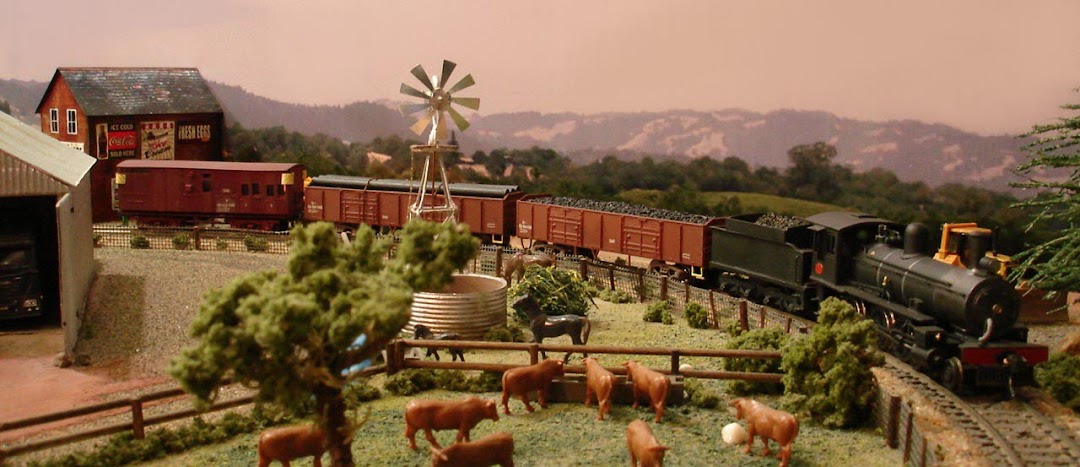South African Wildlife in HO scale on Aliwal North SAR Layout.
Hand painted animals:
Four of the BIG FIVE being represented here at the "Dys Strydom Private Nature Reserve" on the farm "Hoog Waterval".
When you think of ‘The Big 5’, the animals in question are immediately recognized worldwide. The term originated as a way of describing these five species as the most difficult for hunters to capture or kill, due to their ferocity and their likelihood to stand their ground and retaliate. Here is a look at four of the five animals known wide as Africa’s Big Five, and some other wild animals.
(Highlighted in the picture captions below)
 |
Giraffe, Antelope, Plains Zebra, Cape Buffalo,
Black Rhinoceros and African Elephant. |
 |
Giraffe, Antelope, Plains Zebra, Cape Buffalo,
Black Rhinoceros and African Elephant.
|
 |
Giraffe, Antelope, Plains Zebra, Cape Buffalo,
Black Rhinoceros & African Elephant. |
 |
Cape Buffalo, Black Rhinoceros,
African Elephant and African Lion. |
 |
| African Elephant and African Lion. |
Some Wikipedia information:
The giraffe is an African even-toed ungulate mammal, the tallest living terrestrial animal and the largest ruminant. Its species name refers to its camel-like appearance and the patches of color on its fur.
The plains zebra, also known as the common zebra or Burchell's zebra, is the most common and geographically widespread species of zebra. It ranges from the south of Ethiopia through East Africa to as far south as Botswana and eastern South Africa.
The African buffalo or Cape buffalo, is a large African bovine. It is not closely related to the slightly larger wild Asian water buffalo, and its ancestry remains unclear.
The black rhinoceros or hook-lipped rhinoceros is a species of rhinoceros, native to eastern and central Africa including Kenya, Tanzania, Cameroon, South Africa, Namibia, Zimbabwe, and Angola.
African elephants are elephants of the genus Loxodonta. The genus consists of two extant species: the African bush elephant and the smaller African forest elephant. Loxodonta is one of two existing genera of the family, Elephantidae.
The lion (Panthera leo) is one of the five big cats in the genus Panthera and a member of the family Felidae. The commonly used term African lion collectively denotes the several subspecies found in Africa.
African leopard, (Panthera pardus) is a large, carnivorous feline having either tawny fur with dark rosette-like markings or black fur. The leopard is solitary by nature, and is most active between sunset and sunrise, although it may hunt during the day in some areas. Leopards can be found in the savanna grasslands, brush land and forested areas in Africa.
JANUARY 25, 2021 - Spruced up the Dys Strydom Nature Reserve.
Expanded the wetland area, added water and static grass.



















